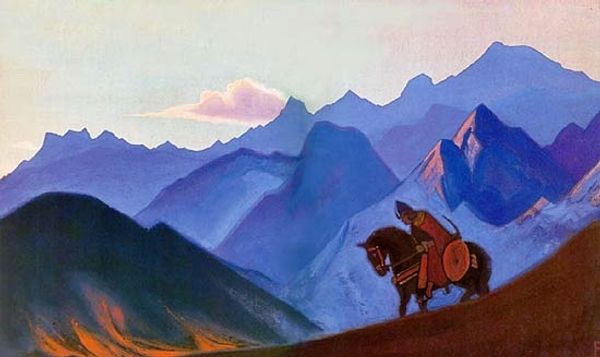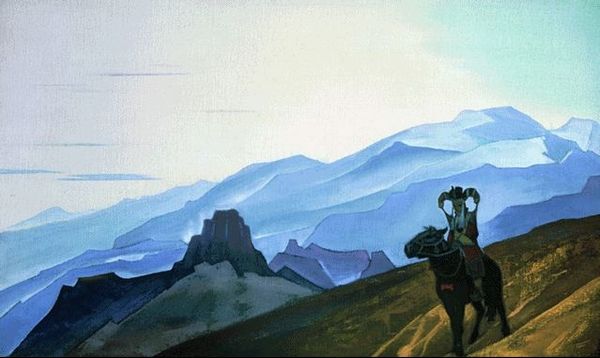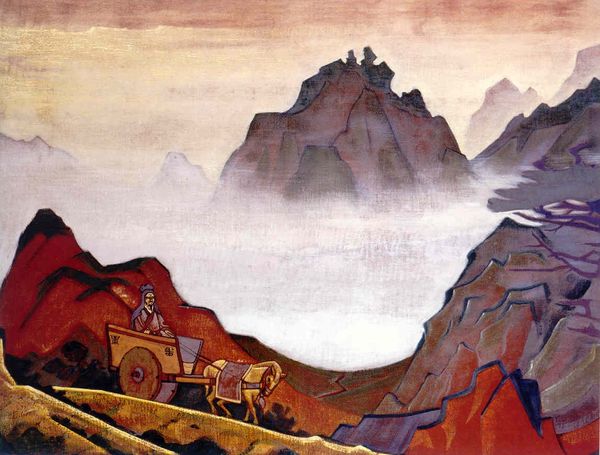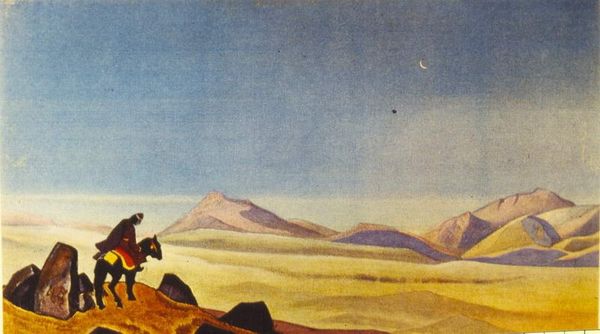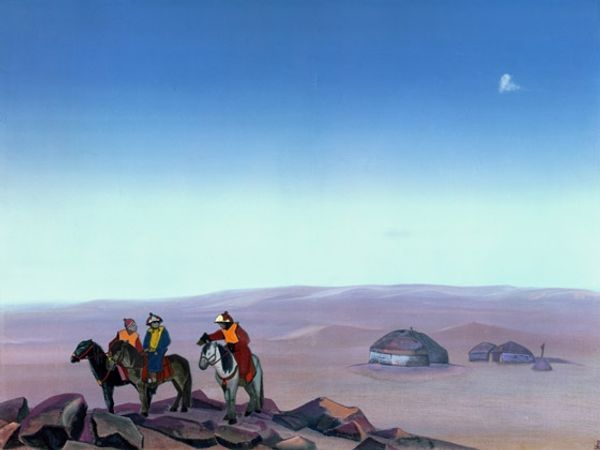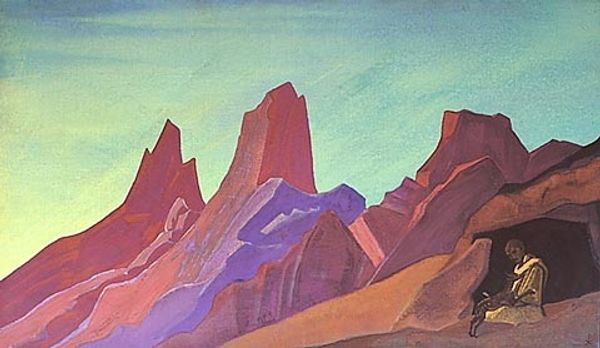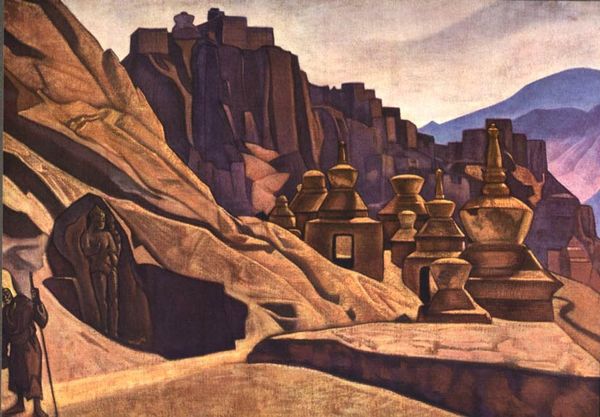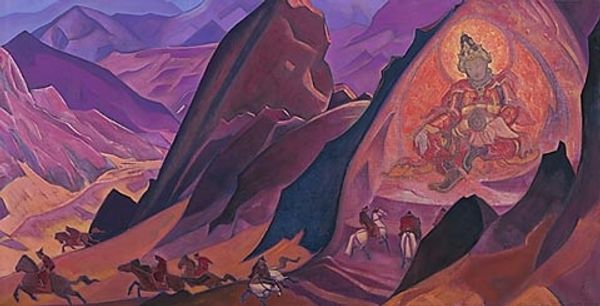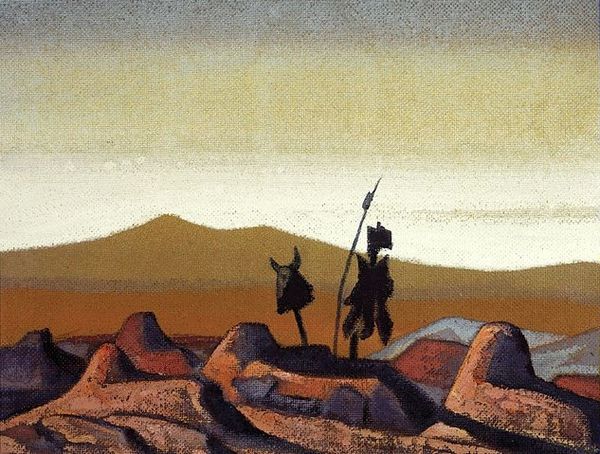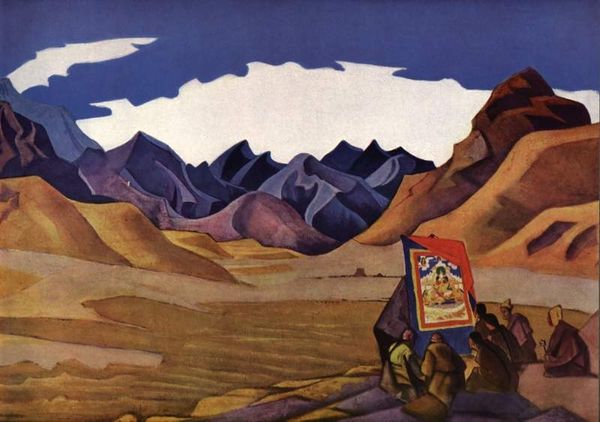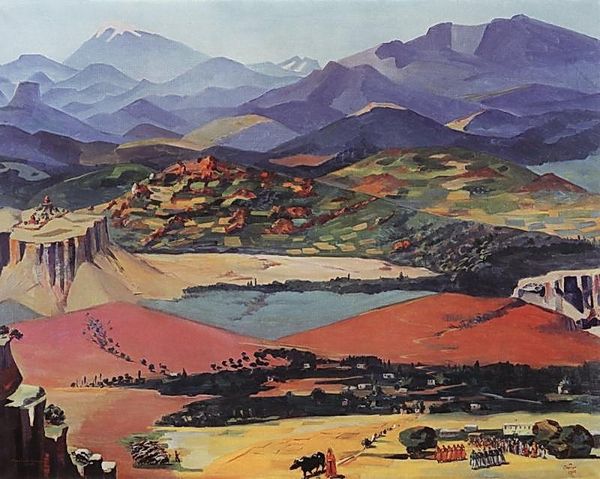
Dimensions: 45 x 80 cm
Copyright: Public domain
Editor: We’re looking at "Hystaspes" by Nicholas Roerich, an oil painting from 1938, now residing in the State Museum of Oriental Art in Moscow. It features a rider making their way through a monumental landscape. It strikes me as both epic and a bit lonely. What are your initial thoughts about this piece? Curator: It's a powerful image, particularly considering Roerich's larger project. This work, referencing the Shahnameh, isn't simply an illustration. It reflects Roerich's theosophical beliefs and his attempt to create a pan-Asian spiritual identity during a turbulent period. Look at the stark, almost theatrical, staging of the scene – how do you think that contributes to its impact? Editor: It definitely adds to that sense of monumentality. The rider looks almost insignificant against the sheer scale of the landscape and the building, like a lone actor on a giant stage. Curator: Exactly. And think about the time: 1938. Stalinism was in full swing, and Roerich, though living abroad, was deeply invested in the fate of Russia and Central Asia. This romanticized, almost mythical depiction of Persian history and culture serves as an imagined counterpoint to the harsh realities of the present. What message was Roerich trying to convey, do you think, about leadership or perhaps resistance? Editor: It’s interesting you frame it as resistance, because the image feels pretty ambiguous to me. Is this supposed to be an ideal ruler, or is the solitary figure meant to symbolize the precariousness of power, given that immense backdrop? Curator: That ambiguity, I believe, is precisely the point. Roerich isn’t offering simple answers. He’s prompting viewers to contemplate the complexities of history, power, and spiritual longing within a world rapidly changing under the forces of modernization and political upheaval. It's art as social commentary, subtly cloaked in orientalist allegory. Editor: I see how looking at the historical context and Roerich's personal beliefs really opens up richer layers of meaning in what seemed at first like just a landscape with a figure. Thanks! Curator: Absolutely. Examining the politics of imagery – that's where art history becomes truly fascinating!
Comments
No comments
Be the first to comment and join the conversation on the ultimate creative platform.
